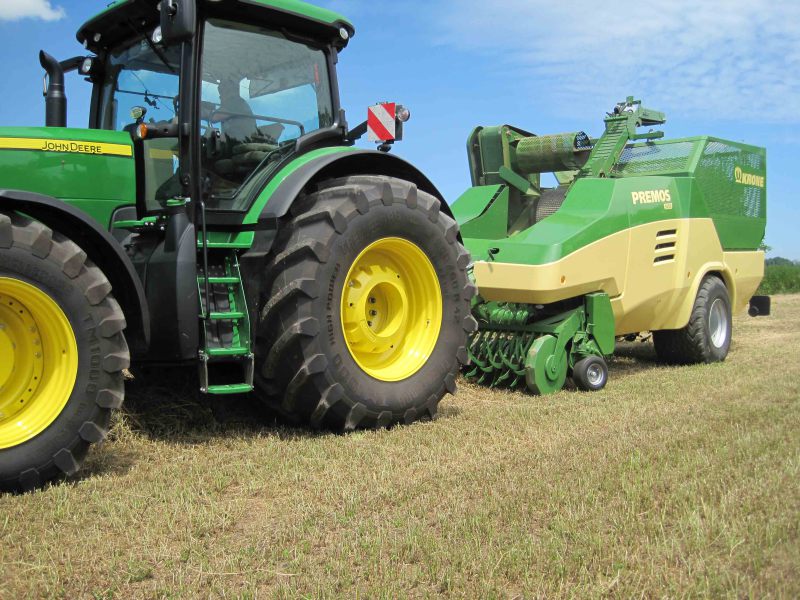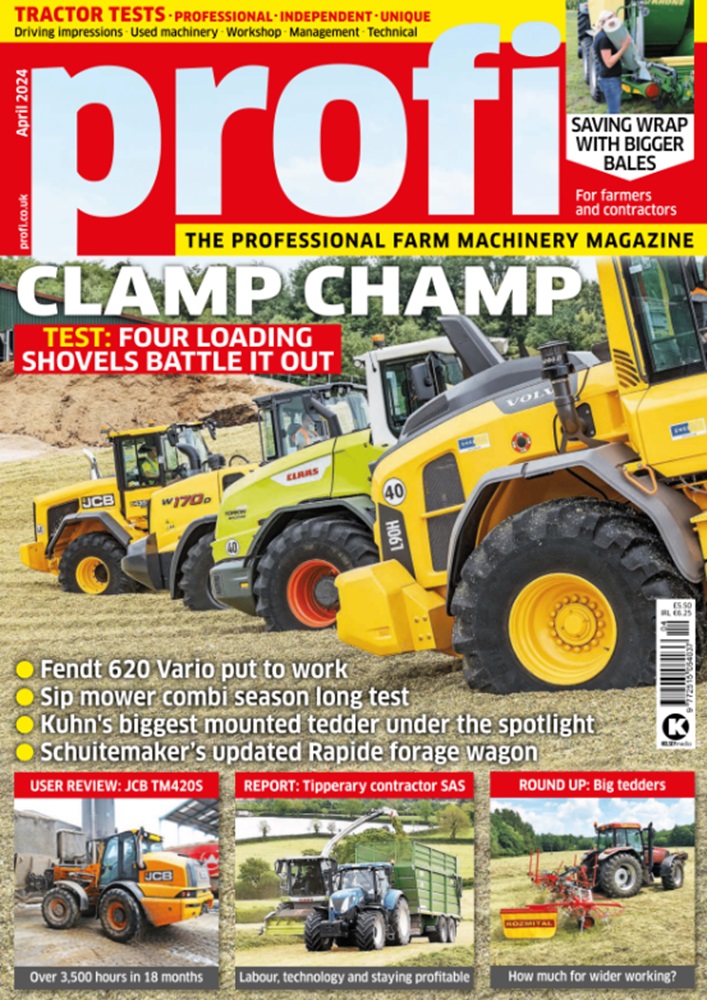There was no denying the star attraction at a recent Krone event staged in Hungary. Its identity? The firm’s prototype straw/hay pelleting machine, the Premos 5000. Though still some way off making it into production, and it being possibly another two years before UK farmers will catch their first glimpse of the machine working on home soil, the Premos is nonetheless already creating quite a stir. The reasons for this interest are that the machine is so dramatically different and has so much potential, hence the gold medal it was awarded at last year’s Agritechnica. Whereas most straw pelleters are static units and must be fed with pre-baled and carted product, the Premos is mobile and capable of pumping out pellets in the field; in Hungary, for example, it was gathering up alfalfa swaths and making hay pellets for animal feed there and then. The logistical advantages of the Premos over other more conventional, static pelleting systems are clear — no bales to pack, cart or store ahead of pelleting by a static unit back at the yard. So, how does the machine work? Following the path of crop flow, the swath is gobbled up by the Premos’s pick-up and retaining roller, which pass the material through to a feed rotor and on to a feed belt. This belt directs the material into the all-important die rollers, where it is pressed through the rollers’ 16mm diameter holes and formed into pellets. The pellets then head up an elevator and into a 5t hopper ready for unloading into a trailer. Pressure inside the die rollers’ holes can be as much as 2,000 bar, and temperatures range from 70°C to 100°C. Power requirement for the machine is 400hp, but as demonstrated in Hungary it’s still a steady old job: depending on the size of the swath, average travel speed is 1.0-1.5km/hr. Not surprisingly this slow output will be seen as the Premos’s main downside, especially by those farming in more unreliable climates such as in the UK where the rapid field clearance of straw is considered so critical. The reality is that a big baler will clear a field of straw ten times faster than the Premos, and it is for this reason that Krone expects the machine to be operated as both a field unit when conditions allow and also as a semi-stationary unit back at the yard through the winter. This means there is the potential for a contractor to offer a year-round pelleting service, a key factor in justification of what is likely to be a significant capital investment. Why the interest in pellets as an alternative to bales? That, says Krone, is all about the need to fully exploit the potential uses of straw as an animal feed, bedding and a renewable fuel, as well as improving the logistics of handling and storing it. Pellets, after all, are easier to transport, create minimal dust and require less storage space by a factor of five than big bales. Food — and fuel — for thought. In addition to Premos, Krone was also highlighting a number of other product developments in Hungary. Of these, perhaps the two most significant machines for UK customers are the Big Pack 870 HDP XC Multi-Bale — 80cm x 70cm bale size, Multibale system, X-Cut cutter — and the Big Pack 1290 HDP II (120 x 90cm bale). The latter is reckoned to be capable of 70% more throughput than HDP I, boasts a density in straw of up to 220kg/m³ and is fitted with eight double knotters. Both of these machines have been seen before but will be fully available to UK customers this year. Not on offer until 2017, however, are several items that will be new to UK eyes. One example is the VariCut (VC) chopping system for Big Pack 1270 and 1290 big balers. A single knife drawer that drops down and pulls out to one side for easy maintenance, VC accommodates a total of 51 knives for a theoretical chop length of 22mm; that compares with the 44mm of the existing X-Cut system. On top of that, VC allows quick selection of six different blade groupings (51/26/25/12/5/0), making for greater flexibility of chopper use. Last up, on the technology front there is a new KMC 200 job processor on its way for Big Pack — more functionality than the previous processor — and buyers may also be tempted by the SmartConnect control box, Krone’s replacement for the I10 unit. Not only will SmartConnect be significantly cheaper to buy than I10, but in addition to providing Wifi connectivity it should enable Krone to offer a more advanced telemetry service on its machines in the future.
Power from the pellet

There was no denying the star attraction at a recent Krone event staged in Hungary. Its identity? The firm’s prototype straw/hay pelleting machine, the Premos 5000. Though still some way off making it into production, and it being possibly another two years before UK farmers will catch their first glimpse of the machine working on home […]











